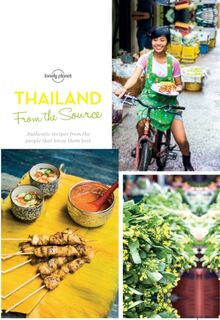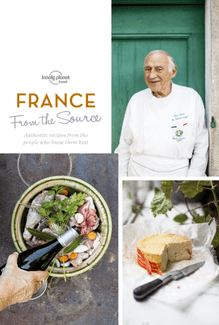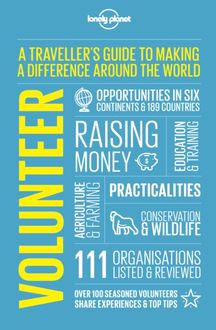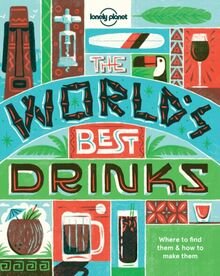From the Source - Mexico , livre ebook
292
pages
English
Ebooks
2017
Vous pourrez modifier la taille du texte de cet ouvrage
Obtenez un accès à la bibliothèque pour le consulter en ligne En savoir plus
Découvre YouScribe et accède à tout notre catalogue !
Découvre YouScribe et accède à tout notre catalogue !
292
pages
English
Ebooks
2017
Vous pourrez modifier la taille du texte de cet ouvrage
Obtenez un accès à la bibliothèque pour le consulter en ligne En savoir plus
Publié par
Date de parution
01 août 2017
Nombre de lectures
1
EAN13
9781786578945
Langue
English
Poids de l'ouvrage
15 Mo
Publié par
Date de parution
01 août 2017
EAN13
9781786578945
Langue
English
Poids de l'ouvrage
15 Mo
CONTENTS
Introduction
Mexico City & Central Mexico
The great melting pot of Mexican culture, Mexico City combines a vibrant street-food scene with the country’s most celebrated haute-cuisine
Oaxaca
This southern state of Mexico is famed for its unique dishes. Greatest renown belongs to its many moles, along with its regional chile peppers, herbs, chocolate, and the potent liquor mezcal
Pacific Coast
Alongside the sandy coves, coconut plantations and rugged headlands of the Pacific Coast are some of Mexico’s freshest fish and seafood dishes. It also produces much of the country’s staple grains, cheeses and chiles
Baja California
The northernmost tip of Mexico plays host to some of the top restaurants in Latin America. Its Mediterranean climate and coastal air are prime for the vineyards of Valle de Guadalupe, which produce most of Mexico’s wine
Yucatán
Caribbean flavours and indigenous Maya recipes influence the cuisine of this southeast corner of Mexico. Tropical fruits such as tamarind and bitter oranges are often used in the Yucatán Peninsula’s distinctive salsas
Recipe sources
About the contributors
Acknowledgements
INTRODUCTION
A vibrant melting pot of striking flavours and pungent aromas, Mexican food is known the world over for its ingredients with a kick. Tangy chiles, sour lime and floral coriander characterise many of its recipes. Yet one of its best-kept secrets is that its dishes are also innately wholesome and satisfying. This a cuisine made to feed a community; comfort food at its best.
Mexico’s local staples are steeped in history, shaped by the land and the sociology of its people. Many originate from a vegetarian Aztec diet; maize was cultivated by indigenous farmers thousands of years back. In Yucatán, ancient Maya flavours live on in the oft-used ingredients of sharp lime, oranges and the notorious habanero chilli. And with arrival of the Spanish in the 16th century came domesticated animals and other ingredients, giving the nation new twists to old methods.
Today Mexico is home to one of the world’s most renowned street food cultures. In Mexico City, antojitos (street-food bites) bestow the streets with scents of homemade salsa, rich onion and beef-topped chalupas and woody, blackened corn. Head to Oaxaca for a colourful street food scene with snacks like garnachas, originally served as party food at velas (festivals). Venture to Puebla and you’ll experience the city that gave birth to the chocolate and chilli mole poblano .
But street food can be found away from the markets too, in diners and gourmet restaurants throughout the country, where the only palpable difference is presentation. In Baja California, for example, upmarket seafood, trendy craft breweries and vineyards stretch along one of the world’s largest peninsulas. Here, young chefs combine local delicacies such as lobster and fish tacos with contemporary Asian flavours. The Pacific Coast is another slice of gourmet heaven: eat on sun-soaked terraces alongside shrimp markets, sampling local fruit, herbs and edible flowers that complement exotic dishes such as fish and coconut ceviche.
Despite its regional varieties, a common element unites this cuisine across the country: a collective resourcefulness. Communities pull together preparing for fiestas, at which food is created both to feed the masses and deliver a celebratory punch. Dishes come alive in the pueblos , with festivities marking patron saint celebrations, weddings and birthdays – especially quinceañeras (15th birthday celebrations) – think warming chiles en nogada , pork tacos and pots of pozole stew.
This is a culture in which local food, full of heart and prepared with an unlikely combination of humility and pride, is king. The Mexican food experience has earned the right to its status as one of the most exciting and authentic in the world.
MEXICO CITY & CENTRAL MEXICO
The great melting pot of Mexican culture, Mexico City combines a vibrant street-food scene with the country’s most celebrated haute-cuisine. Around the capital, several towns such as Guadalajara and Puebla have developed their own proudly distinctive local flavours
SOPA SECA DE NATAS
Crepes in creamy tomato sauce
SOPA TARASCA
Michoacán-style tortilla soup
TACOS DE JAMAICA
Hibiscus tacos
TOSTADAS DE ATÚN
Tuna tostadas
TACOS AL PASTOR
Marinated pork tacos
CHILAQUILES EN SALSA DE FRIJOL
Fried tortillas in bean sauce
CHALUPAS DE CAMARÓN CONFITADO
Shrimp confit chalupas
ESQUITES CON TUÉTANO
Fried corn kernels with bone marrow
CARNE EN SU JUGO
Meat in its juices
CHILE EN NOGADA
Stuffed poblano pepper in walnut sauce
LECHÓN CONFITADO CON SALSA TATEMADA
Suckling pig confit with tatemada sauce
JERICALLA
Guadalajara-style custard
SOPA SECA DE NATAS
Crepes in creamy tomato sauce
Nicos chef Gerardo Vazquez is passionate about preserving Mexico’s culinary traditions and it shows in his sopa seca de natas, an exceedingly rare lasagne-like crepe dish, an intriguing marriage of Mexican and French flavours.
Chef // Gerardo Vazquez Location // Nicos, Mexico City
I f it weren’t for Mexico City restaurant Nicos, an old French-Mexican entrée known as sopa seca de natas could well find itself in danger of extinction. Chef Gerardo Vazquez, a pioneer of Mexico’s slow-food movement, simply wants to give the dish the exposure it deserves.
‘I am the only one who has put sopa seca de natas in a restaurant. It’s important because many Mexican recipes have faded into obscurity, they go out of style and get lost along the way.’
The recipe comes from French nuns working in the kitchen at Guadalajara’s Capuchinas Convent in the mid-19th century, around the time of the French intervention in Mexico. Fast forward about six decades, as the Mexican Revolution is winding down, and Vazquez’s grandmother is hired as kitchen staff, and it’s there where she learns the recipe for sopa seca de natas, which she would pass along to Vazquez’s mother, Nicos’ founder Maria Elena Lugo.
Sopa seca de natas is essentially a tropicalised, savoury version of French-inspired crepe cakes. Poblano chile pepper slices and shredded chicken are sandwiched between layers of paper-thin crepes, then the dish is oven-baked in a creamy tomato sauce. Natas refers to the cream obtained from boiling raw milk, but mascarpone cream works as an acceptable substitute.
Architect-turned-chef Vazquez has deep respect for Mexico’s culinary traditions. Thanks in part to his advocacy efforts, in 2010 Mexico became the first country ever to have its cuisine recognised by Unesco as an intangible cultural heritage of humanity. Sopa seca de natas is just one of many important culinary traditions being kept alive at Nicos. Menu items also include seasonal escamoles (ant larva) and edible flowers, both of which have pre-Hispanic roots, and the restaurant buys some of its produce from chinampas (raised gardens along canals), a farming practice that dates back to the Aztec era.
SOPA SECA DE NATAS
Crepes in creamy tomato sauce
Serves 8
Preparation & cooking time 2hr 50min
For the crepes
240ml (8 ½ fl oz) milk
5 eggs
230g (8oz) flour
butter, as needed
For the sauce
1kg (2 ¼ lb) tomatoes
240ml (8 ½ fl oz) cream from boiled raw milk (or mascarpone cream)
salt, to taste
For the filling
½ chicken breast
¼ white onion
3 coriander (cilantro) sprigs
salt, to taste
4 poblano chile peppers
For baking
115g (4oz) butter, cut in small cubes 1 Preheat the oven to 200°C/390°F. 2 To make the crepes, mix the milk, eggs and flour in a bowl, then let rest for 30 minutes. 3 Heat a small pan with butter and pour a thin layer of batter into the pan. Cook over medium heat for one or two minutes, then flip the crepe. Repeat this process until you have no more batter. Set aside crepes in a container covered with a damp cloth. 4 For the sauce, boil the tomatoes until they are soft, then drain the water, blitz the tomatoes with a blender/liquidiser and strain the sauce into a pot. Over medium heat, reduce the sauce to a puree. 5 Blend two ladles of the tomato puree with the cream then add the rest of the puree, salt to taste and blend again. Set aside the sauce. 6 For the filling, boil the chicken breast for 45 minutes with the onion, coriander and salt to taste. Remove the chicken from the stock, let it cool, then shred it. 7 Char the poblano chiles directly over a stovetop flame then place them in a plastic bag and let rest for 10 minutes. Remove the chiles from the bag and peel the skin, remove the seeds and stems and cut the chiles into thin slices. 8 Coat a 25cm (10in)-long baking pan with butter. Spread some sauce on the bottom of the pan and cover with one layer of crepes. 9 Spread some sauce on the first crepe and top with chicken and poblano chile slices and add another layer. Continue the same process with each layer, then pour over the remaining sauce and evenly distribute the butter cubes over the top. 10 Bake for 1 hour or until browned on top. Cut into eight portions and serve.
SOPA TARASCA
Michoacán-style tortilla soup
This hearty tortilla soup from the central western state of Michoacán is a nod, even in name alone, to the rich heritage of a vast region once known as the Tarascan State.
Chef // Lucero Soto Location // Lu Cocina Michoacana, Morelia
M ichoacán’s lovely lakeside town of Pátzcuaro is known first and foremost for its colourful Day of the Dead festivities, but it’s also the birthplace of sopa tarasca (tarascan soup in gringo-speak). The story begins with Rafael Garcia Correa, aka ‘don Rafa’, a cook working in Pátzcuaro’s Gran Hotel in the 1960s.
Don Rafa wanted to create a dish with affordable and accessible ingredients, so he came up with a tomato-based tortilla soup. Little did he know that his concoction would become downright legendary. Nowadays sopa tarasca is a quintessen














